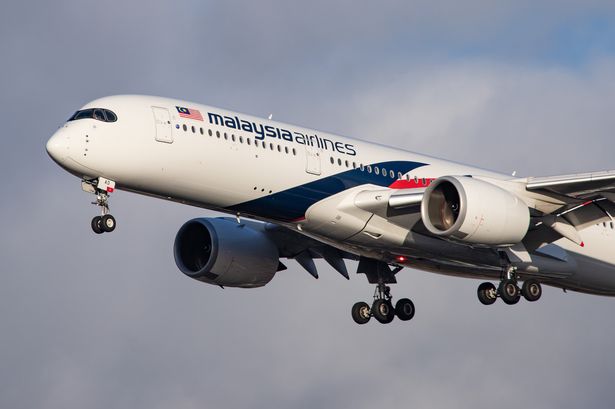The disappearance of Malaysia Airlines Flight 370 Google Maps (MH370) on March 8, 2014, remains one of the most baffling aviation mysteries in modern history. The Boeing 777-200ER, carrying 239 passengers and crew, vanished from radar screens less than an hour after taking off from Kuala Lumpur International Airport, bound for Beijing. Despite extensive search efforts spanning years and covering vast areas of the Indian Ocean, the fate of MH370 and its passengers remains unknown. In the years since the disappearance, conspiracy theories, technological advancements, and the rise of tools like Google Maps have fueled speculation about whether modern technology could help solve the mystery. This article explores the role of Google Maps in the search for MH370 and whether it holds the key to uncovering the truth.
The Disappearance of MH370: A Brief Overview
Before delving into the role of Google Maps, it’s essential to understand the timeline and context of MH370’s disappearance. The flight departed Kuala Lumpur at 12:41 AM local time and was scheduled to arrive in Beijing at 6:30 AM. Approximately 40 minutes into the flight, the aircraft lost contact with air traffic control while flying over the South China Sea. Military radar tracked the plane deviating from its planned route, turning west and crossing the Malay Peninsula before heading south into the Indian Ocean. The last satellite communication with the aircraft occurred at 8:19 AM, after which all contact was lost.
The disappearance triggered one of the most extensive and expensive search operations in aviation history. Initial efforts focused on the South China Sea and the Strait of Malacca, but as data from satellite communications emerged, the search shifted to the southern Indian Ocean. Despite combing through millions of square kilometers of ocean and analyzing debris that washed ashore on remote islands, the main wreckage of the plane has never been found.
The Role of Technology in the Search for MH370
The search for MH370 has relied heavily on advanced technology, including satellite imagery, underwater sonar systems, and data analysis. However, the vastness of the search area and the challenges of deep-sea exploration have made the task incredibly difficult. In recent years, tools like Google Maps have emerged as potential resources for amateur sleuths and researchers hoping to contribute to the investigation.
Google Maps, a widely used mapping service, provides high-resolution satellite imagery of the Earth’s surface. While it is primarily designed for navigation and exploration, its detailed images have occasionally been used to identify unusual or unexplained phenomena. For example, users have discovered shipwrecks, ancient ruins, and even military installations using the platform. This has led some to wonder whether Google Maps could reveal clues about the location of MH370.
Can Google Maps Solve the Mystery?
The idea of using Google Maps to locate MH370 is both intriguing and controversial. Proponents argue that the platform’s extensive coverage and accessibility make it a valuable tool for crowdsourcing the search. Skeptics, however, point out the limitations of satellite imagery, particularly in the context of an aviation disaster.
Strengths of Using Google Maps
- Accessibility and Crowdsourcing: Google Maps is freely available to anyone with an internet connection, making it an ideal platform for engaging the public in the search. Enthusiasts and researchers can scour the images for signs of wreckage or anomalies that might have been overlooked by official search teams.
- High-Resolution Imagery: In many areas, Google Maps offers high-resolution images that allow users to zoom in and examine details with remarkable clarity. This level of detail could potentially reveal debris or other evidence related to the crash.
- Historical Imagery: Google Maps provides access to historical satellite images, allowing users to compare changes over time. This feature could be useful for identifying new debris or disturbances in the ocean that might be linked to MH370.
Limitations of Using Google Maps
- Ocean Coverage: While Google Maps provides detailed images of landmasses, its coverage of the oceans is less comprehensive. The vast majority of the Earth’s oceans remain unmapped at high resolution, making it difficult to spot small or submerged objects like aircraft debris.
- Image Timeliness: Satellite images on Google Maps are not updated in real-time. The delay between image capture and publication means that any debris or wreckage visible on the platform may no longer be in the same location by the time it is discovered.
- Depth and Scale: The Indian Ocean, where MH370 is believed to have crashed, is one of the deepest and most remote parts of the world. Even if debris were visible on the surface, the sheer scale of the ocean and the depth of the water would make it nearly impossible to locate the main wreckage using satellite imagery alone.
- False Positives: The ocean is full of natural and man-made objects that can be mistaken for aircraft debris. Without context or additional data, it is easy to misinterpret images and draw incorrect conclusions.
Notable Attempts to Use Google Maps in the Search
Despite these limitations, several individuals and groups have attempted to use Google Maps to locate MH370. One of the most famous examples occurred in 2014, when an Australian man claimed to have spotted the wreckage of the plane in the Cambodian jungle using Google Earth. The images, which appeared to show a plane-shaped object, sparked a flurry of media attention and speculation. However, subsequent investigations revealed that the object was likely a natural formation or a visual artifact.
Similarly, in 2018, a British engineer claimed to have found the plane in the Indian Ocean using Google Maps. His analysis suggested that the aircraft had made a controlled landing on the water and drifted to a specific location. While his findings were widely shared on social media, experts dismissed the claims as unfounded, citing the lack of corroborating evidence.
The Future of Technology in Solving the Mystery
While Google Maps has not yet provided a breakthrough in the search for MH370, it highlights the potential of technology to engage the public and contribute to complex investigations. As satellite imagery and mapping tools continue to improve, they may play a more significant role in future search efforts. For example, advancements in artificial intelligence and machine learning could enable automated analysis of vast amounts of satellite data, identifying potential targets for further investigation.
Additionally, underwater drones and autonomous vehicles are becoming increasingly sophisticated, offering new possibilities for exploring the ocean depths. These technologies, combined with improved satellite imagery, could eventually lead to the discovery of MH370’s wreckage.
Conclusion
The disappearance of Malaysia Airlines Flight 370 Google Maps remains one of the greatest unsolved mysteries of our time. While tools like Google Maps have captured the imagination of amateur sleuths and researchers, they have yet to provide definitive answers. The challenges of searching the vast and remote Indian Ocean, combined with the limitations of current technology, mean that the mystery of MH370 is likely to persist for years to come.
However, the ongoing advancements in technology offer hope that the truth may one day be uncovered. Whether through improved satellite imagery, artificial intelligence, or underwater exploration, the tools of the future may finally shed light on the fate of MH370 and bring closure to the families of those who were lost. Until then, the search continues, fueled by a combination of human ingenuity, technological innovation, and an unyielding desire for answers.
Read more: PlayMyWorld Latest: Revolutionizing the Gaming Experience



